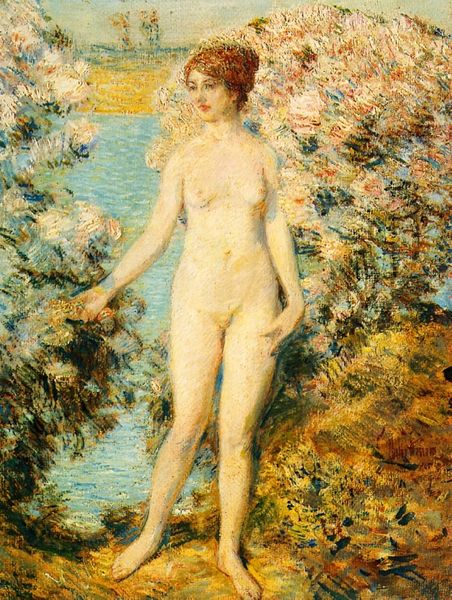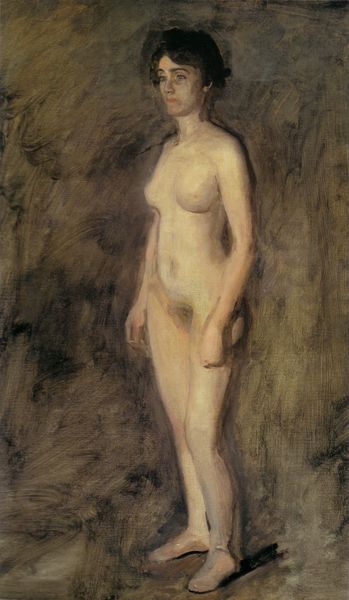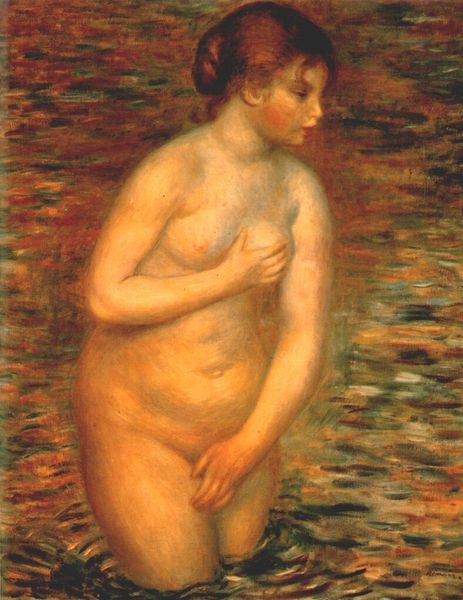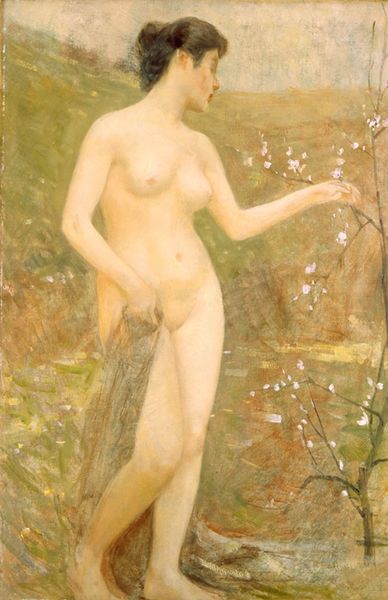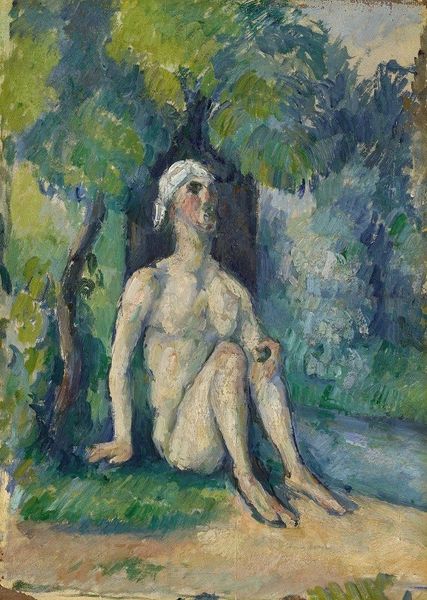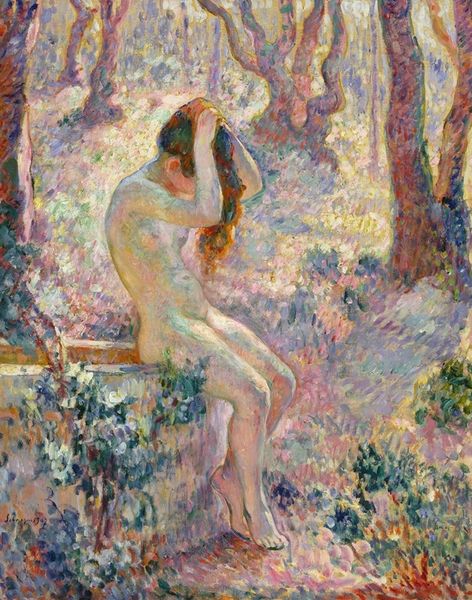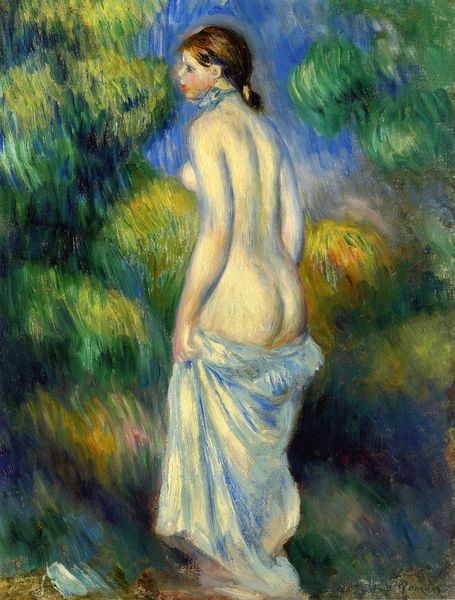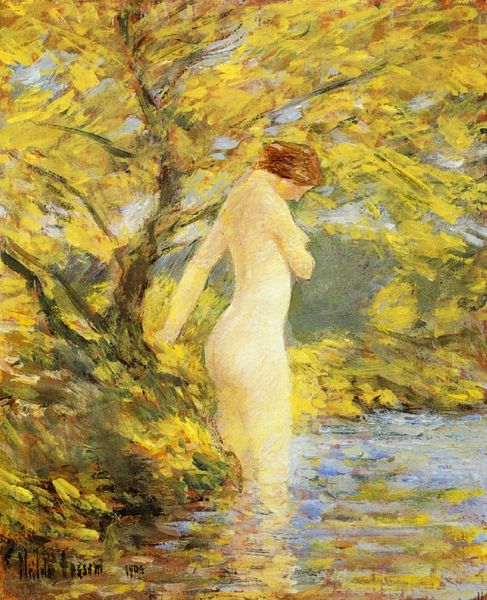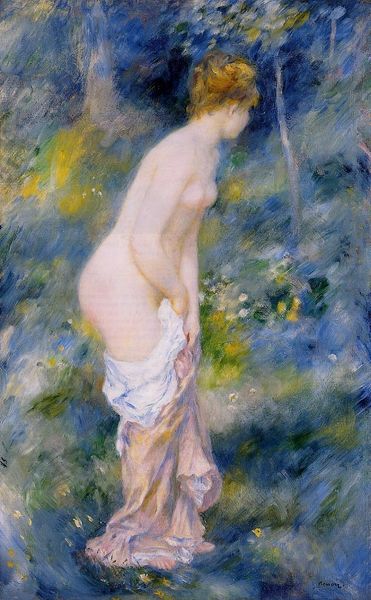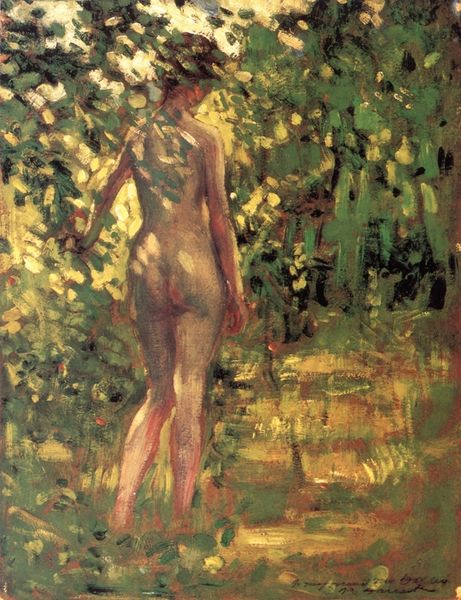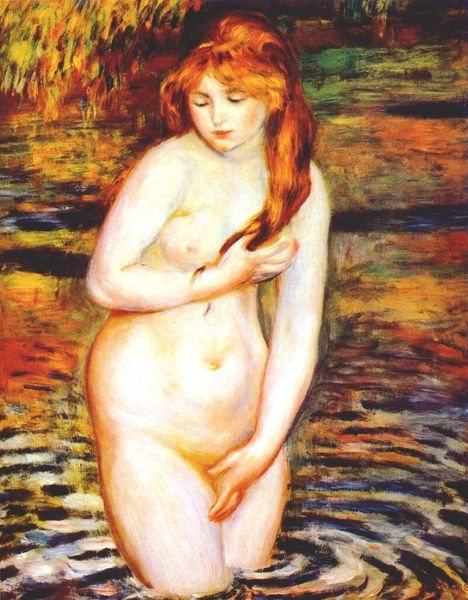
Copyright: Public domain
Curator: Before us is Childe Hassam’s “The Butterfly,” an oil painting created in 1902. Editor: My immediate impression is of shimmering light. The almost ethereal figure seems to emerge from the landscape itself. There’s a delicate, dreamlike quality that the composition evokes. Curator: Hassam was a leading figure in American Impressionism, deeply concerned with capturing the transient effects of light and atmosphere. He was working en plein air which adds a critical layer of the social to the art, as access to landscape itself was contested ground during the time of Hassam's production. What materials were employed? How are landscapes policed by specific societal needs? This nude figure in the landscape prompts thoughts about access, bodies, and permissible consumption within that era. Editor: Absolutely, but observe the brushstrokes! Broken, vibrant strokes build the form and create depth; color theory and its optical mixing are at play. The figure, while seemingly central, blends tonally with the surrounding landscape, the textures merge: land, body, water all exist on a single painterly plane. Curator: Exactly! Hassam, influenced by impressionist methods available, shows an emphasis on capturing visual experience. Considering the marketplace this nude entered is also necessary; who purchased these paintings and how were they used in the world of the rising industrial elite? Editor: The liminal space the artist creates allows the viewer a momentary impression. Observe how the light seems to dance across the canvas—it’s not just representation; the sensation of light is as important as its source. The absence of stark lines gives rise to a soft glow. Curator: That's the product of Hassam working in his time, within an art world, during very specific labor dynamics, though; it also reminds us that we are still impacted by the social relations within it. Editor: His style provides a sense of temporal suspension and allows one to revel in artifice of surface alone, a fleeting glimpse into the impressionist sublime. Curator: Right. Placing it within a time that also saw massive income inequality further brings up complex, important points that add to viewing such a piece. Editor: And those formal properties you address so elegantly have broadened my awareness of its contextual presence too. Curator: Precisely! These paintings persist to make us consider so many different things that exist due to material constraints, making "The Butterfly" ever so crucial.
Comments
No comments
Be the first to comment and join the conversation on the ultimate creative platform.
